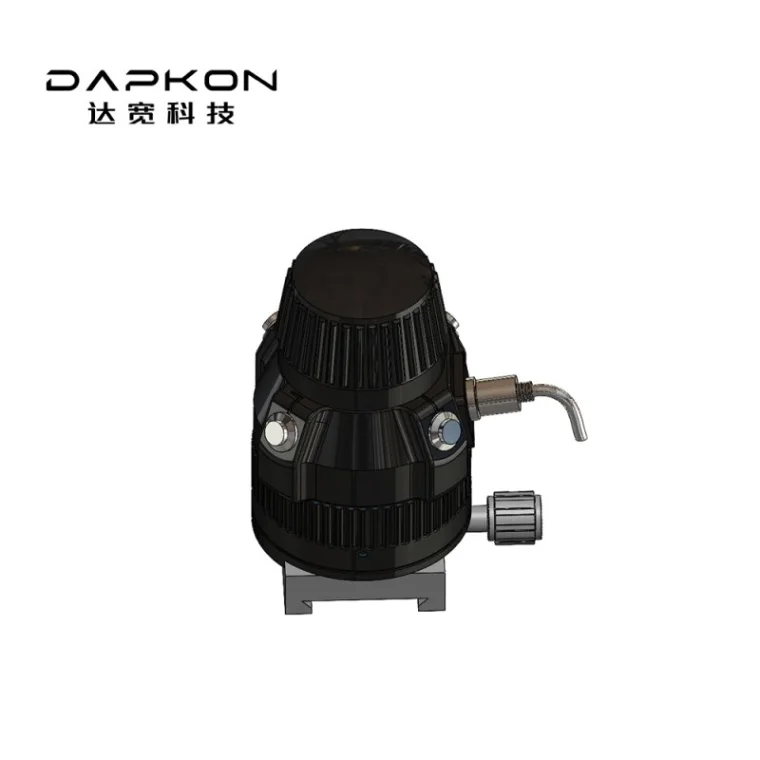With the rapid development of intelligent manufacturing, 3C (computer, communications, and consumer electronics) electronic product production lines are transforming toward high precision, high efficiency, and flexibility. In this process, industrial robots have become indispensable core equipment, and robotic guide handles, as the interface between industrial robots and operators, are increasingly playing a key role in 3C electronics manufacturing. This article will delve into the application scenarios, advantages, technical principles, and future development trends of robotic guide handles in 3C electronics manufacturing.
1. Overview of Robotic Guide Handles
Robot guide handles, also known as robot teaching handles or teach pendants, are input devices specifically designed for operating and controlling industrial robots. They typically feature ergonomic design, precise positioning control, sensitive operational feedback, and high compatibility with the robot control system. Using the handle, operators can program robots, teach paths, and debug movements in a more intuitive and safe manner.
Compared to traditional manual teaching or offline programming methods, robotic guide handles significantly reduce operational difficulty and time costs while improving teaching accuracy, which is particularly important for high-precision 3C electronics manufacturing production lines.

2. Application Scenarios of Robotic Guide Handles in 3C Electronics Manufacturing
3C electronic products typically involve the assembly of small, high-precision components, such as smartphones, laptops, tablets, and wearable devices. Robotic guide handles play a variety of roles in these production processes:
2.1 Precision Assembly
3C electronic product components are small and require high precision, such as chip packaging, microcircuit board soldering, and camera module installation. Using a robotic guide handle, operators can directly guide the robot to complete complex assembly movements and make precise adjustments on the actual production line. Compared to traditional automated assembly, guide handles offer greater flexibility, making them particularly suitable for small batch sizes and a wide variety of products.
2.2 Welding and Gluing
In 3C electronics manufacturing, precision welding and gluing processes require extremely high precision. Using a robotic guide handle, operators can manually teach soldering or gluing paths, ensuring that every solder or glue point is precisely positioned. Furthermore, the handle's force control function helps the robot control the applied force to avoid component damage.
2.3 Testing and Quality Inspection
Robot guide handles can also be used in testing and inspection. For example, after assembling a mobile phone or tablet, a robot can carry a test probe to perform functional testing. By using a guide handle to teach the test path, operators can quickly adapt to different product models, shortening debugging time and improving testing efficiency.
2.4 Rapid Production Line Changeover
3C electronic products are frequently updated, and production lines need to frequently switch between different models. Traditional automation programming cycles are long, which can easily affect production capacity. Using a robot guide handle, operators can quickly complete teaching, path optimization, and parameter adjustment, achieving flexible production and significantly improving the adaptability of the production line.
3. Technical Advantages of Robotic Guide Handles
3.1 High Precision and High Sensitivity
Guide handles often integrate high-precision sensors that can accurately detect operator movements. This is crucial for the assembly, welding, and testing of small components in 3C electronics manufacturing. Operators simply move the robot end effector with the handle to achieve micron-level positioning.
3.2 Ergonomic Design
3C electronics manufacturing environments often require long hours of operation. The ergonomic design of the handle can reduce operator fatigue and improve efficiency. Furthermore, the flexible handle button layout and force feedback design allow operators to maintain high-precision control during complex operations.
3.3 Intelligence and Programmability
Modern robot guide handles typically support multiple control modes, such as position control, speed control, and force control. Operators can use the handle to set different operating parameters, automating various processes. This intelligent feature provides highly programmable and flexible production capabilities for 3C electronics manufacturing.
3.4 Safety
Robot guide handles often integrate emergency stop buttons and safety mode switching functions to ensure human and machine safety during operation. Especially in precision electronics assembly and dispensing and soldering, these safety mechanisms prevent accidental equipment operation from causing damage to the product or operator.
4. Typical Application Cases
Case 1: Smartphone Camera Module Assembly
During the assembly of smartphone camera modules, the module components are extremely small, making high-precision assembly difficult for traditional robotic arms. Using a robot guide handle, operators can directly teach the robot precise paths and make real-time adjustments during assembly. Results show a 30% improvement in assembly accuracy and a 25% increase in production efficiency.
Case 2: Laptop Keyboard Gluing
In laptop keyboard manufacturing, the glue dispensing process requires ensuring uniform glue application and precise placement on each key. Using the robot's guide handle for teaching, operators can quickly complete the glue dispensing path for different keyboard models, shortening debugging cycles and reducing glue waste.
Case Study 3: Tablet Screen Function Testing
After tablet screen assembly, touch and display function testing is required. By using the guide handle to teach the robot the test path, the operator can quickly adapt to different screen models, enabling batch testing and significantly improving inspection efficiency.
5. Conclusion
In the 3C electronics manufacturing sector, robot guide handles are not only a key tool for operating industrial robots but also a vital support for achieving flexible production and high-precision manufacturing. Through high-precision control, ergonomic design, intelligent programming, and safety assurance, they provide powerful production capacity and flexibility for 3C electronics manufacturing. With technological advancements, robot guide handles will become more intelligent, collaborative, and customized, further driving the automation upgrade of the 3C electronics industry.
In the future, whether it's smartphones, laptops, or wearable devices, robot guide handles will become an indispensable component of 3C electronics manufacturing production lines, driving the entire industry towards higher efficiency, higher precision, and greater flexibility.
As a leading robotic guide handle distributor, Dapkon has long focused on providing high-precision, high-reliability guide handle solutions for the 3C electronics manufacturing industry. With a comprehensive product line and professional technical support, Dapkon not only helps companies quickly complete teaching, assembly, and dispensing processes, but also offers customized solutions tailored to specific product models and production requirements, improving production efficiency and precision. Whether on smartphone, tablet, or laptop production lines, Dapkon's guide handles enable flexible, efficient, and safe operation, providing a solid foundation for customers' intelligent manufacturing upgrades.
www.dapkon.ai
dapkon

